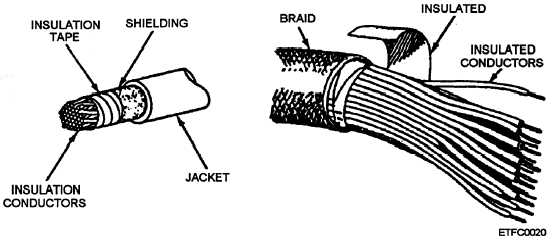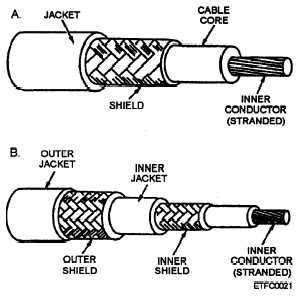Figure 2-34.—Twisted component or multiconductor cable.
TWISTED COMPONENT OR MULTI-
CONDUCTOR CABLES. —Twisted component
cables consist of multi-insulated wires (solid or
stranded), with up to 120 conductors. They can be
single wires or twisted pairs. The cable is concentric in
shape and the larger cables are usually semi-rigid to
provide support and put less strain on the cable itself
and its connector (fig. 2-34). Depending on the length
of the cable, popular cable types for large main-
frames and minis include 2U/2UW/LS2U or
2AU/2WAU/LS2AU. The construction and a
description can be found in NEETS, Module 19, The
Technician's Handbook. Twisted component cables
can be terminated with rectangular multipin connectors
or circular multipin connectors. They can be used for
parallel and serial data transfer and in all types of
computers.
COAXIAL CABLES. —Coaxial cables are
designed to transmit signals efficiently between 1 kHz
and 4000 MHZ with minimum loss and little or no
distortion. A coaxial cable is made of a central signal
conductor covered with an insulating material (the
dielectric core), which in turn, is covered by an outer
tubular conductor (the return path). The cable is called
coaxial because the conductors, usually two or three,
are separated by the dielectric core. The inner core can
be solid or stranded wire that is bare, timed, or silver
coated. Coaxial cables always have an outer shielding;
refer to MIL-C-17 for specifications. Commonly used
coaxial cables include RG-12A, RG-58, and RG-59 for
coaxial and TRF-8 and TRF-58 for triaxial. Coaxial
component cables are terminated with circular multipin
connectors. Coaxial cables are used for serial transfer
of data. Figure 2-35 shows examples of two types of
coaxial cable: single and triaxial.
FIBER OPTIC CABLES. —Refer to NEETS,
Module 24, Introduction to Fiber Optics, for a detailed
discuss of the fiber optic cabling. Fiber optic cables are
used for serial transfer of data.
CAUTION
CARE SHOULD ALWAYS BE
EXERCISED WHEN HANDLING
CABLES. SEVERE BENDING AND
HANDLING OF THE CABLE BY ITS
CONNECTOR CAN CAUSE DAMAGE.
Figure 2-35.—Coaxia1 cable: A. Single; B. Triaxial.
2-25





